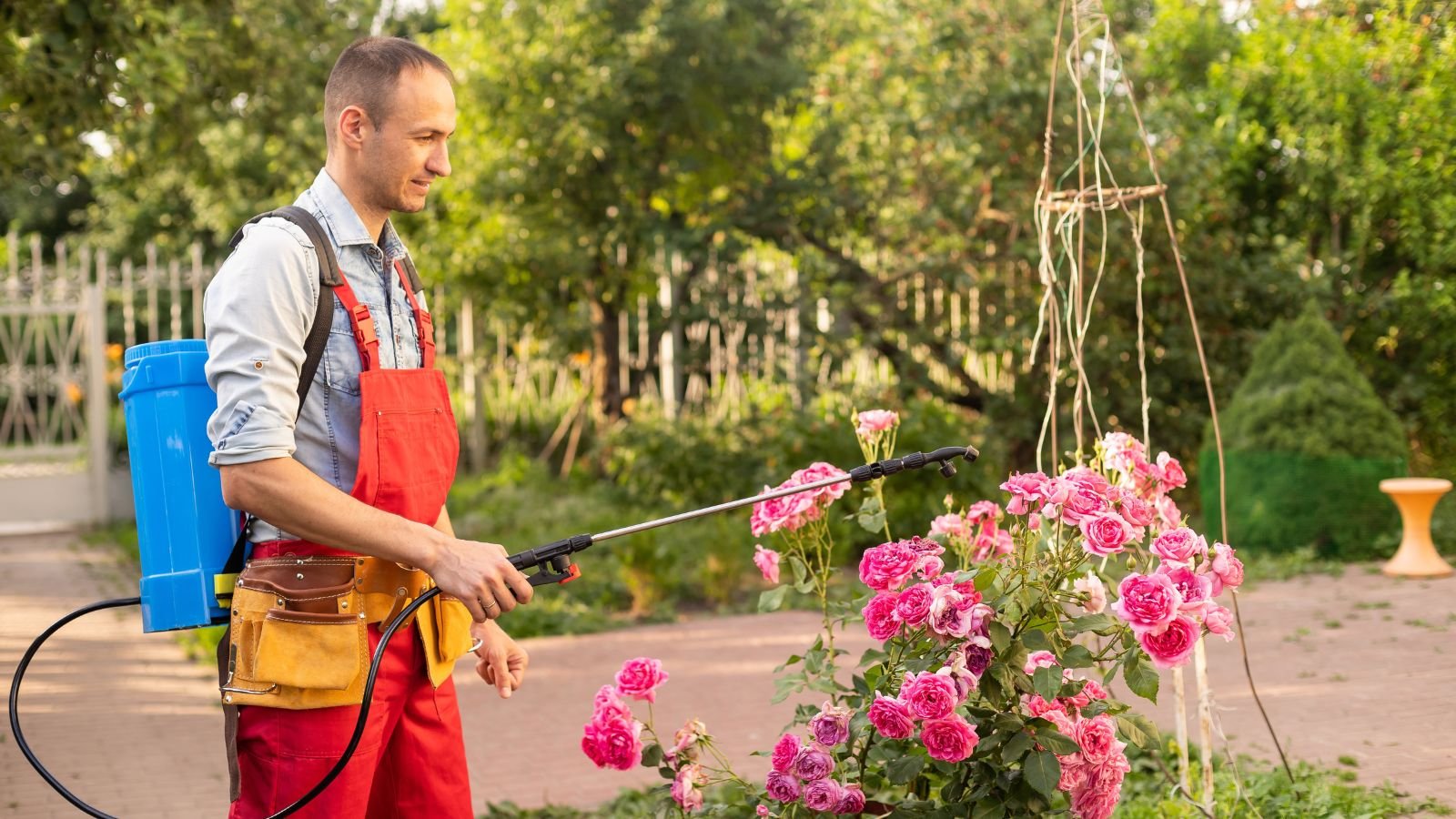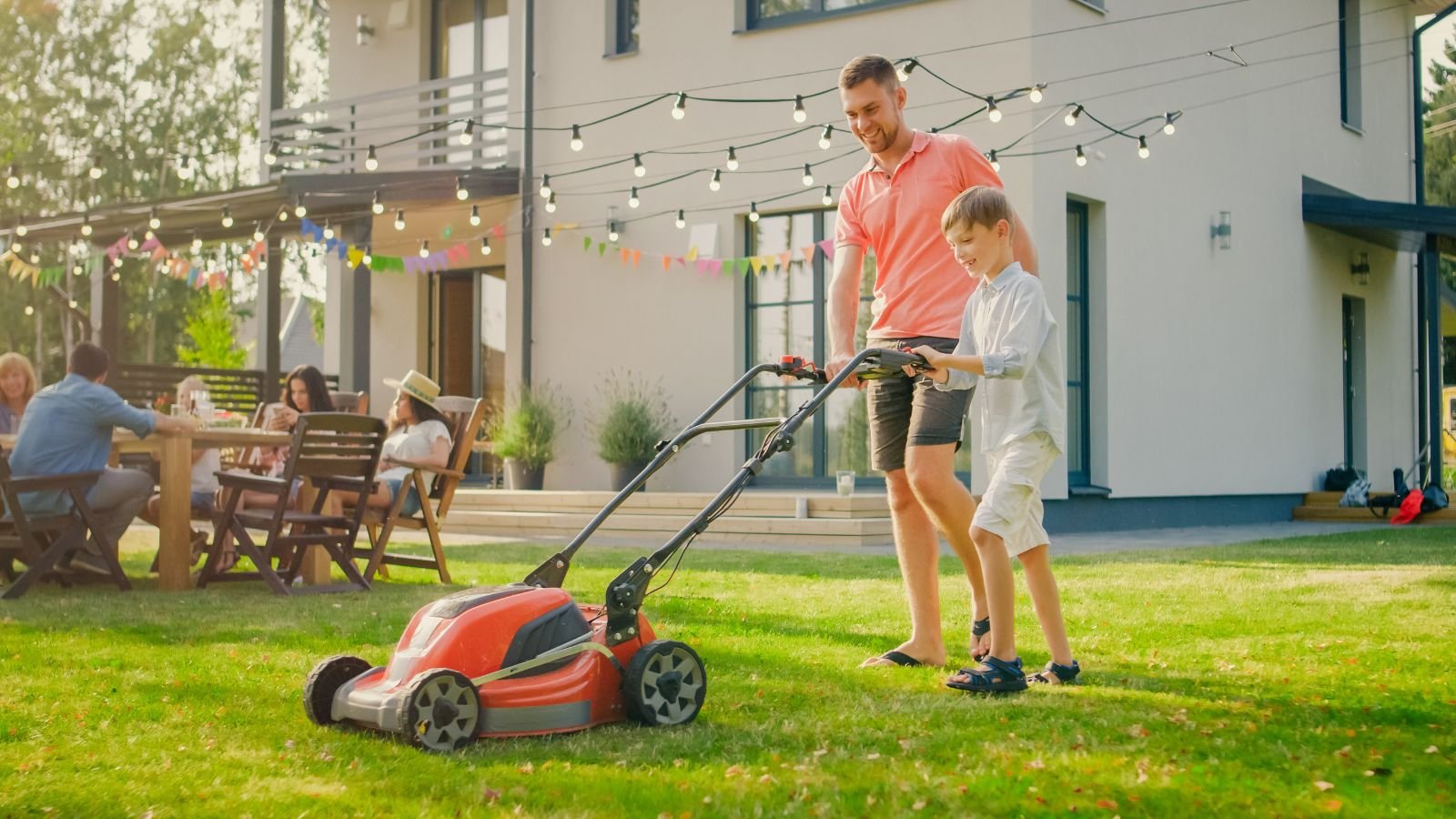New homeowners often dream of a lush, green lawn complementing their perfect home. But maintaining that picture-perfect yard can be a daunting task. A survey by the National Association of Landscape Professionals revealed that most homeowners have a lawn, yet many lack the knowledge to care for it properly. Let’s uncover the most frequent lawn care mistakes and how to avoid them.
Planting the wrong grass variety

Planting the wrong grass can be a frustrating lawn care blunder. Signs of trouble include poor growth and unusual leaf structures. Grass types are divided into cool-season and warm-season varieties, each thriving in specific climates. Different grass varieties thrive in specific climates: cool-season species like fescue, ryegrass, and bluegrass prefer temperatures between 60 to 70 degrees Fahrenheit, while warm-season types like St. Augustine, Bermuda, and zoysia thrive in the balmy 80 to 95 range. Fixing the issue might involve overseeding with a suitable variety, soil pH adjustments, or even a complete lawn overhaul.
Not Testing The Soil

Soil testing is essential for a healthy lawn. It provides a detailed analysis of your soil’s nutrient levels and pH, helping you determine the precise amount and type of fertilizers needed. By tailoring your fertilization plan, you can optimize plant growth, prevent over-fertilization, and protect the environment. Additionally, soil testing saves time and money by ensuring you only apply the necessary amendments. A soil pH level of 6 to 7 is ideal for most grasses, and you can easily buy a good soil testing kit at any gardening or home improvement store to get started.
Uneven Fertilizer Application

Uneven fertilizer application can leave your lawn looking like a zebra with unsightly stripes. Using spreaders like drop or broadcast models can help, but mastering their use takes practice. Uneven fertilizer application can result in an unsightly striped lawn. Using spreaders can help, but practice is vital. Always follow package instructions to prevent fertilizer overload, which can cause excessive leaf growth, limited root development, and even lawn burn. Slow-release fertilizers reduce the risk of grass burning and require less frequent applications. Remember, even distribution is crucial for a healthy, green lawn.
Mowing Too Short

Mowing grass too short is a common mistake. Cutting off more than a third of the blade at once stresses the grass, hindering its ability to photosynthesize and develop strong roots. Maintain a consistent mowing height of around 2.5 inches, and sharpen your mower blades for a clean cut. Remember, longer grass equals a healthier, more resilient lawn.
Overwatering

Overwatering is a common lawn care mistake. Frequent, shallow watering encourages weak roots, making your grass dependent on constant watering. Deep, infrequent watering promotes a robust root system, leading to a healthier, drought-tolerant lawn. Aim for about an inch of water per week, adjusting for weather conditions. Remember, balance is critical: too much water can harm your grass.
Not Aerating The Grass

You can suffocate your grass if you don’t aerate it regularly. Lawn aeration involves punching holes in your lawn’s surface. Aeration is essential to maintain a healthy lawn as it helps your grass breathe by loosening compacted soil and allowing air, water, and nutrients to reach the roots. This revitalizes your lawn, promoting thicker growth and better drainage. Aerate your lawn once a year, preferably in early spring.
Neglecting Weeds

Weeds are persistent invaders that can quickly overtake your lawn. While regular pulling helps, it’s not enough. To effectively control weeds, incorporate a targeted herbicide application into your lawn care routine. Remember to choose herbicides designed explicitly for your lawn type and weed problems. Consistent weed management will help maintain a lush, weed-free lawn.
Throwing Away Grass Clippings

Instead of throwing away your grass clippings, leave them on the lawn. This natural process, called mulching or grasscycling, turns clippings into nutrient-rich fertilizer, reducing your need for chemical options. It’s also an eco-friendly choice as it keeps clippings out of landfills. Enjoy a healthier, greener lawn while benefiting the environment.
Neglecting Lawn Diseases

Lawn diseases can quickly damage your turf. Common culprits include Snow Mold, Brown Patch, and Dollar Spot. These fungal diseases thrive in damp, shaded conditions and can spread rapidly. Early detection is crucial. Regularly inspect your lawn for unusual spots or discoloration. Proper lawn care, including proper mowing height, adequate watering, and balanced fertilization, helps prevent many diseases. If you suspect a disease, consult a local gardening expert or lawn care professional for accurate diagnosis and treatment recommendations.
Walking On Wet Or Frozen Lawn

Avoid walking on your lawn when it’s wet or frozen. This prevents damaging grass blades and soil compaction. Walking on wet grass can lead to moisture loss and a flattened appearance. Frozen grass is especially vulnerable and can be damaged or killed by foot traffic. Let your lawn recover before enjoying it.
Watering At The Wrong Time

For optimal lawn health, water early in the morning, ideally before 10 AM. This allows ample time for the grass blades to dry before the day’s heat sets in, reducing the risk of fungal diseases like Rust, Brown Patch, and Dollar Spot. Morning watering also minimizes water evaporation, ensuring more water reaches the roots. Avoid watering in the evening, as moisture lingering on the grass overnight creates a breeding ground for diseases. While smart sprinklers offer convenience and customization, remember to adjust watering schedules for your lawn based on weather conditions and grass type for efficient water usage.
Seeding At The Wrong Time

Timing is everything when reseeding your lawn. While spring might seem ideal, fall is often the best time for cool-season grasses. Avoid overcrowding the seeds and ensure proper watering. Remember, reseeding is a temporary fix for deeper issues like grubs or diseases—address underlying problems for long-term lawn health.
